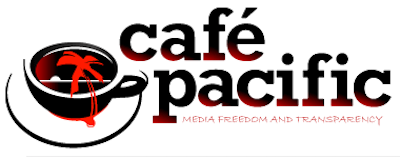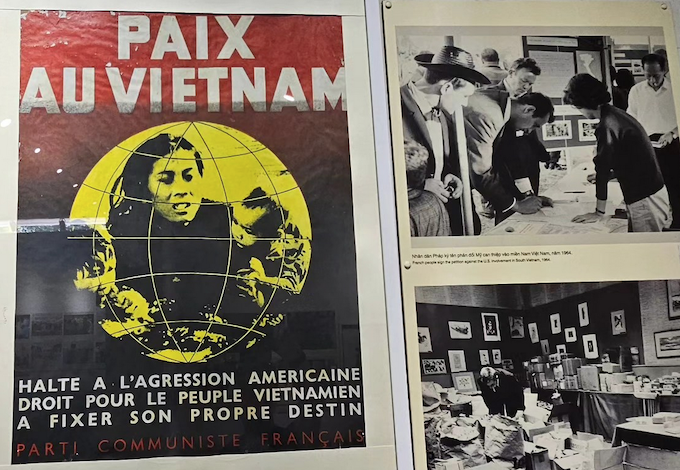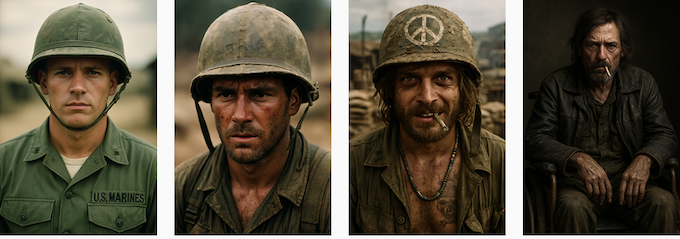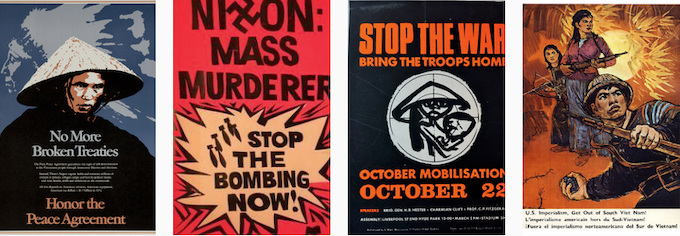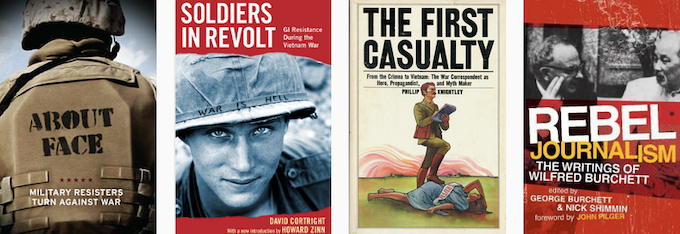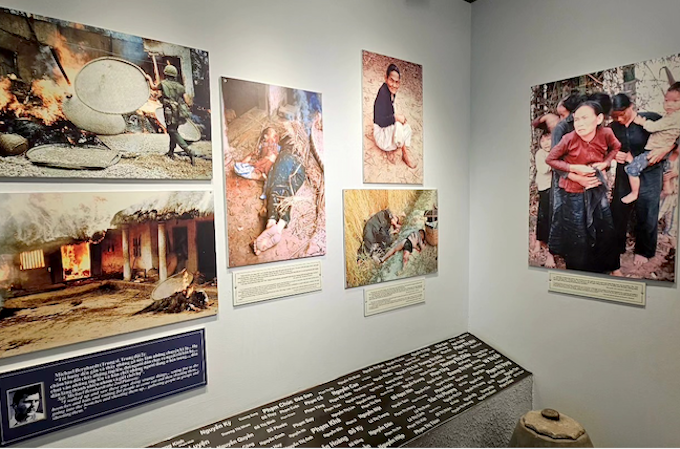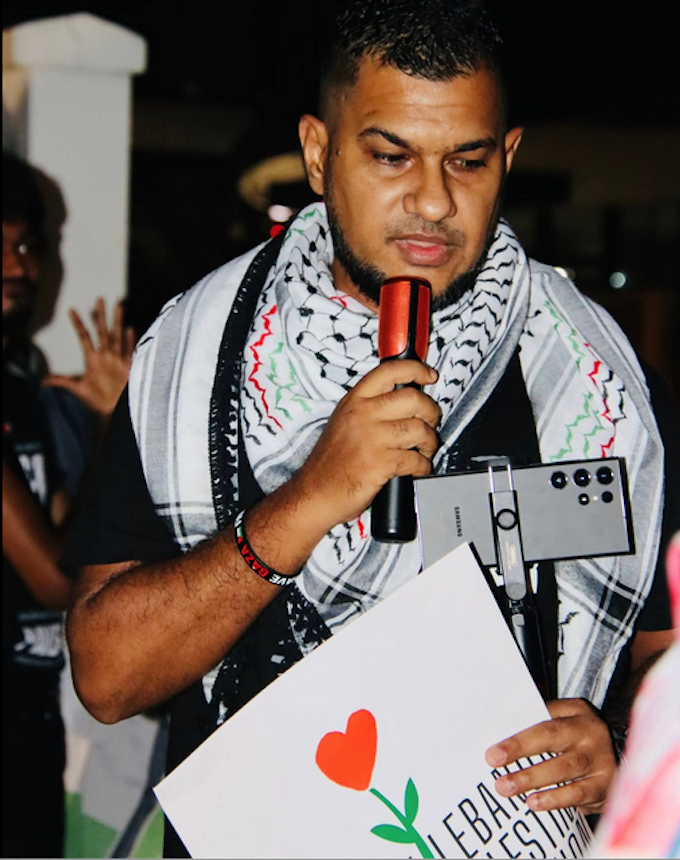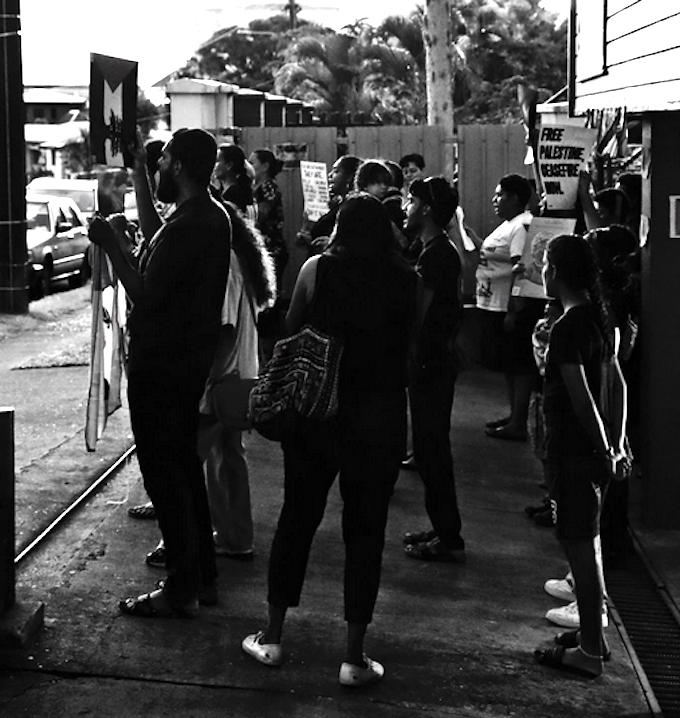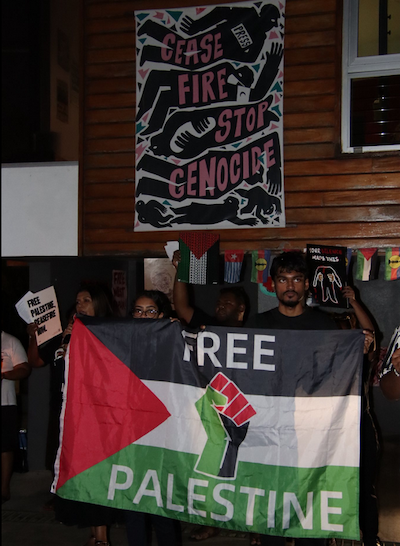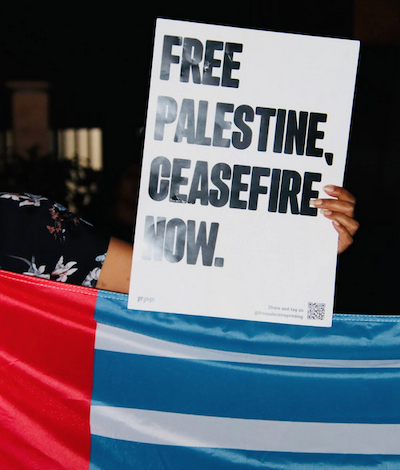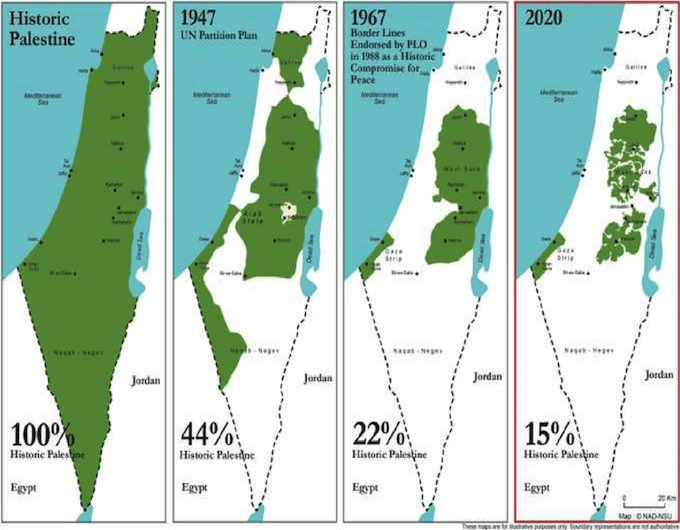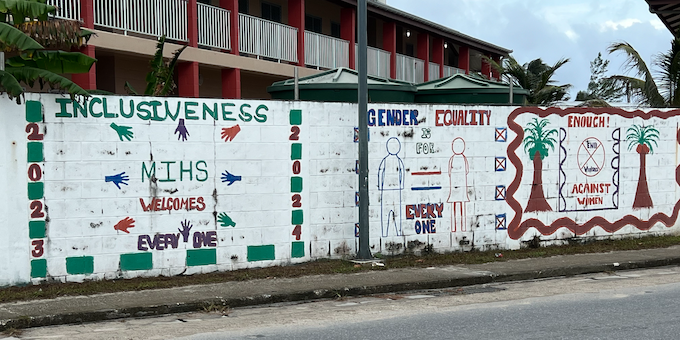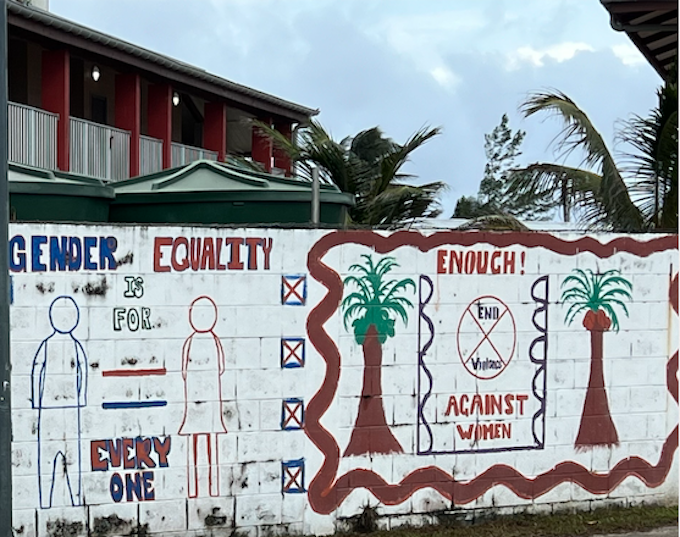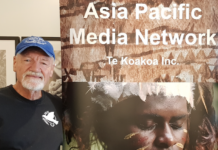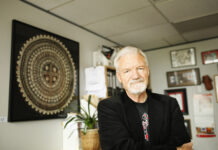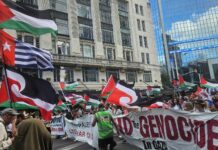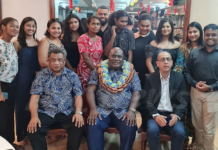Part Three of a three-part Solidarity series.
COMMENTARY: By Eugene Doyle
30 April 1975. Saigon Fell, Vietnam Rose. The story of Vietnam after the US fled the country is not a fairy tale, it is not a one-dimensional parable of resurrection, of liberation from oppression, of joy for all — but there is a great deal to celebrate.
After over a century of brutal colonial oppression by the French, the Japanese, and the Americans and their various minions, the people of Vietnam won victory in one of the great liberation struggles of history.
It became a source of inspiration and of hope for millions of people oppressed by imperial powers in Central & South America, Asia, Africa, the Middle East and Eastern Europe.

Civil war – a war among several
The civil war in Vietnam, coterminous with the war against the Western powers, pitted communists and anti-communists in a long and pitiless struggle.
Within that were various strands — North versus South, southern communists and nationalists against pro-Western forces, and so on. As various political economists have pointed out, all wars are in some way class wars too — pitting the elites against ordinary people.
As has happened repeatedly throughout history, once one or more great power becomes involved in a civil war it is subsumed within that colonial war. The South’s President Ngô Đình Diệm, for example, was assassinated on orders of the Americans.
By 1969, US aid accounted for 80 percent of South Vietnam’s government budget; they effectively owned the South and literally called the shots.
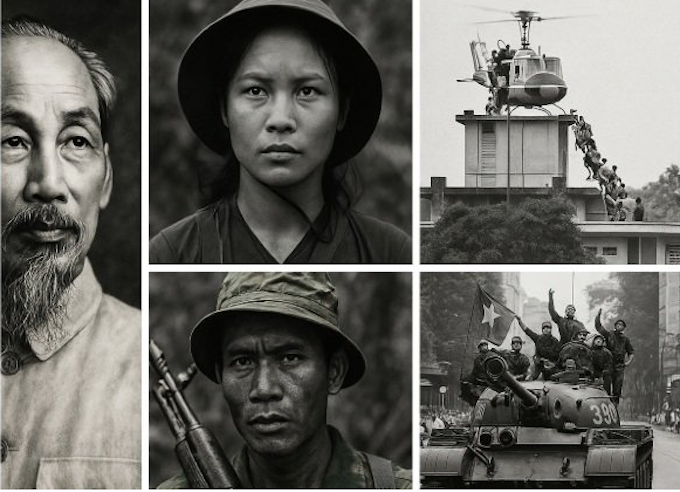
US punishes its victims
This month, 50 years after the Vietnamese achieved independence from their colonial overlords, US President Donald Trump declared April 2 “Liberation Day” and imposed some of the heaviest tariffs on Vietnam because they didn’t buy enough US goods!
As economist Joseph Stiglitz pointed out, they don’t yet have enough aggregate demand for the kind of goods the US produces. That might have something to do with the decades it has taken to rebuild their lives and economy from the Armageddon inflicted on them by the US, Australia, New Zealand and other unindicted war criminals.
Straight after they fled, the US declared themselves the victims of the Vietnamese and imposed punitive sanctions on liberated Vietnam for decades — punishing their victims.
Under Gerald Ford (1974–1977), Jimmy Carter (1977–1981), Ronald Reagan (1981–1989), George H.W. Bush (1989–1993) right up to Bill Clinton (1993–2001), the US enforced the Trading with the Enemy Act (TWEA) of 1917.
The US froze the assets of Vietnam at the very time it was trying to recover from the wholesale devastation of the country.
Tens of millions of much-needed dollars were captured in US banks, enforced by the International Emergency Economic Powers Act (IEEPA). The US also took advantage of its muscle to veto IMF and World Bank loans to Vietnam.
Countries like Australia and New Zealand, to their eternal shame, took part in both the war, the war crimes, and imposing sanctions and other punitive measures subsequently.
The ‘Boat People’ refugee crisis
While millions celebrated the victory in 1975, millions of others were fearful. The period of national unification and economic recovery was painful, typically repressive — when one militarised regime replaces another.
This triggered flight: firstly among urban elites — military officers, government workers, and professionals who were most closely-linked to the US-run regime.
You can blame the Commies for the ensuing refugee crisis but by strangling the Vietnamese economy, refusing to return Vietnamese assets held in the US, imposing an effective blockade on the economy via sanctions, the US deepened the crisis, which saw over two million flee the country between 1975 and the 1980s.
More than 250,000 desperate people died at sea.
Đổi Mới: the move to a socialist-market economy
In 1986, to energise the economy, the government moved away from a command economy and launched the đổi mới reforms which created a hybrid socialist-market economy.
They had taken a leaf out of the Chinese playbook, which under the leadership of Deng Xiaoping (1978 –1989), had moved towards a market economy through its “Reform and Opening Up” policies. Vietnam saw the “economic miracle” of its near neighbour and its leaders sought something similar.
Vietnam’s economy boomed and GDP grew from $18.1 billion in 1984 to $469 billion by 2024, with a per capita GDP at purchasing power parity (PPP) of $15,470 (up from about $300 per capita in the 1970s).
After a sluggish start, literacy rates soared to 96.1 percent by 2023, and life expectancy reached 73.7 years, only a few short of the USA. GDP growth is around 7 percent, according to the OECD.
An unequal society
Persistent inequality suggests the socialist vision has partially faded. A rural-urban divide and a rich-poor divide underlines ongoing injustices around quality of life and access to services but Vietnam’s Gini coefficient — a measure of income inequality — puts it only slightly more “unequal” as a society than New Zealand or Germany.
Corruption is also an issue in the country.
Press controls and political repression
As in China, political power resides with the Party. Freedom of expression — highlighted by press repression — is severely limited in Vietnam and nothing to celebrate.
Reporters Without Borders (RSF) rates Vietnam as 174th out of 180 countries for press freedom and regularly excoriates its strongmen as press “predators”. In its country profile, RSF says of Vietnam: “Independent reporters and bloggers are often jailed, making Vietnam the world’s third largest jailer of journalists”.
Vietnam is forging its own destiny
What is well worth celebrating, however, is that Vietnam successfully got the imperial powers off its back and out of its country. It is well-placed to play an increasingly prosperous and positive role in the emerging multipolar world.
It is part of the World Trade Organisation (WTO), and the ASEAN network, and borders China, giving Vietnam the opportunity to weather any storms coming from the continent of America.
Vietnam today is united and free and millions of ordinary people have achieved security, health, education and prosperity vastly better than their parents and grandparents’ generations were able to.
In the end the honour and glory go to the Vietnamese people.
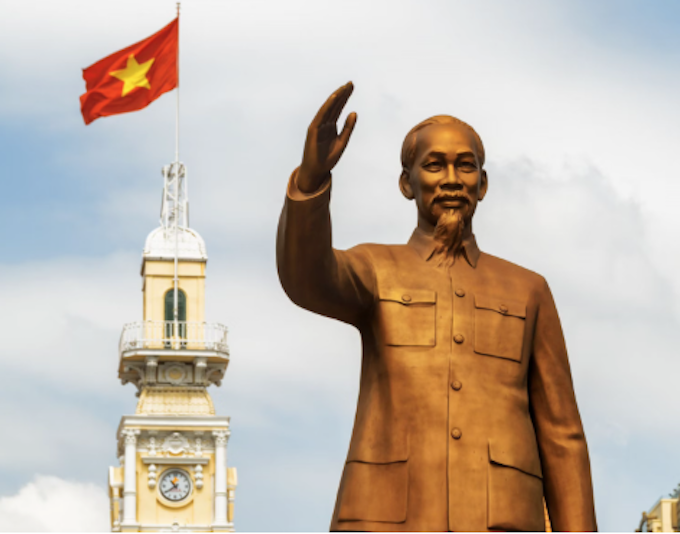
I’ll give the last word to Ho Chi Minh, the great leader of the Vietnamese people who reached out to the United States, and sought alliance not conflict. He was rebuffed by the super-power which had a different agenda.
On September 2, 1945, Ho Chi Minh proclaimed the independent Democratic Republic of Vietnam in Hanoi’s Ba Dinh square:
“‘All men are created equal. They are endowed by their Creator with certain inalienable rights, among them are Life, Liberty, and the pursuit of Happiness.’
“This immortal statement was made in the Declaration of Independence of the United States of America in 1776. In a broader sense, this means: All the peoples on the earth are equal from birth, all the peoples have a right to live, to be happy and free.
“… A people who have courageously opposed French domination for more than eight years, a people who have fought side by side with the Allies against the Fascists during these last years, such a people must be free and independent.
“For these reasons, we, members of the Provisional Government of the Democratic Republic of Vietnam, solemnly declare to the world that Vietnam has the right to be a free and independent country — and in fact is so already. The entire Vietnamese people are determined to mobilise all their physical and mental strength, to sacrifice their lives and property in order to safeguard their independence and liberty.”
And, my god, they did.
To conclude, a short poem attributed to Ho Chi Minh:
“After the rain, good weather.
“In the wink of an eye,
the universe throws off its muddy clothes.”
Eugene Doyle is a community organiser and activist in Wellington, New Zealand. He received an Absolutely Positively Wellingtonian award in 2023 for community service. His first demonstration was at the age of 12 against the Vietnam War. This article was first published at his public policy website Solidarity and is republished here with permission.
